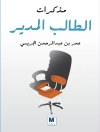Over the course of its three-hundred-year history, the Catholic Church in Louisiana witnessed a prolonged shift from French to English, with some south Louisiana churches continuing to prepare marriage, baptism, and burial records in French as late as the mid-twentieth century. Speaking French in Louisiana, 1720–1955 navigates a complex and lengthy process, presenting a nuanced picture of language change within the Church and situating its practices within the state’s sociolinguistic evolution.
Mining three centuries of evidence from the Archdiocese of New Orleans archives, the authors discover proof of an extraordinary one-hundred-year rise and fall of bilingualism in Louisiana. The multiethnic laity, clergy, and religious in the nineteenth century necessitated the use of multiple languages in church functions, and bilingualism remained an ordinary aspect of church life through the antebellum period. After the Civil War, however, the authors show a steady crossover from French to English in the Church, influenced in large part by an active Irish population. It wasn’t until decades later, around 1910, that the Church began to embrace English monolingualism and French faded from use.
The authors’ extensive research and analysis draws on quantitative and qualitative data, geographical models, methods of ethnography, and cultural studies. They evaluated 4, 000 letters, written mostly in French, from 1720 to 1859; sacramental registers from more than 250 churches; parish reports; diocesan council minutes; and unpublished material from French archives. Their findings illuminate how the Church’s hierarchical structure of authority, its social constraints, and the attitudes of its local priests and laity affected language maintenance and change, particularly during the major political and social developments of the nineteenth and early twentieth centuries.
Speaking French in Louisiana, 1720–1955 goes beyond the “triumph of English” or “tragedy of Cajun French” stereotypes to show how south Louisiana negotiated language use and how Christianization was a powerful linguistic and cultural assimilator.
Über den Autor
Sylvie Dubois, Gabrielle Muir Professor of French Studies at Louisiana State University and director of the LSU Center for French and Francophone Studies, is the author of three books and editor of Une histoire épistolaire de la Louisiane.Emilie Gagnet Leumas, Director of Archives and Records for the Archdiocese of New Orleans, is the author of Managing Diocesan Archives and Records: A Guide for Bishops, Chancellors and Archivists and Roots of Faith: History of the Diocese of Baton Rouge.Malcolm Richardson, Dr. J. F. Taylor Professor of English at LSU, is the author of Middle Class Writing in Late Medieval London, among other works.












